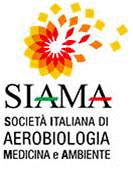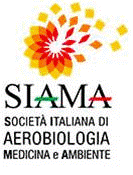Di seguito vi segnaliamo una selezione di articoli di interesse aerobiologico di recente pubblicazione
- Csépe Z, Makra L, Voukantsis D, Matyasovszky I, Tusnády G, Karatzas K, Thibaudon M. Predicting daily ragweed pollen concentrations using Computational Intelligence techniques over two heavily polluted areas in Europe.Sci Total Environ. 2014 Jan 31;476-477C:542-552.doi: 10.1016/j.scitotenv.2014.01.056.
- Berger U, Karatzas K, Jaeger S, Voukantsis D, Sofiev M, Brandt O, Zuberbier T, Bergmann KC. 2013. Personalized pollen-related symptom-forecast information services for allergic rhinitis patients in Europe. Allergy. Jul 30.doi: 10.1111/all.12181.
- Villalba M, Rodríguez R, Batanero E.The spectrum of olive pollen allergens. From structures to diagnosis and treatment. 2013. Methods. Aug 3. pii: S1046- 2023(13)00287-9. doi: 10.1016/j.ymeth.2013.07.038.
- Rodríguez-Rajo FJ, Astray G, Ferreiro-Lage JA, Aira MJ, Jato-Rodriguez MV,Mejuto JC. Neural Netw. 2010. Evaluation of atmospheric Poaceae pollen concentration using a neural network applied to a coastal Atlantic climate region. 23:419-25. doi: 10.1016/j.neunet.2009.06.006.
- Galan C, Antunes C, Brandao R, Torres C, Garcia-Mozo H, Caeiro E, Ferro R,Prank M, Sofiev M, Albertini R, Berger U, Cecchi L, Celenk S, Grewling L, Jackowiak B, Jäger S, Kennedy R, Rantio-Lehtimäki A, Reese G, Sauliene I, Smith M, Thibaudon M, Weber B, Weichenmeier I, Pusch G, Buters JT; HIALINE working group. 2013. Airborne olive pollen counts are not representative ofexposure to the major olive allergen Ole e 1. Allergy. 68:809-12. doi: 10.1111/all.12144.
- D’Amato G, Baena-Cagnani CE, Cecchi L, Annesi-Maesano I, Nunes C, Ansotegui I, D’Amato M, Liccardi G, Sofia M, Canonica WG. 2013. Climate change, air pollution and extreme events leading to increasing prevalence of allergic respiratory diseases. Multidiscip Respir Med. 11;8-12. doi: 10.1186/2049-6958-8-12
- Robert G. Peel, Roy Kennedy, Matt Smith, Ole Hertel. Relative efficiencies of the Burkard 7- Da, Rotorod and Burkard Personal samplers for Poaceae and Urticaceae pollen under field conditions. Annals of agricultural and Environmental Medicine, vol. 21, 2014, n°4, pp- 745-752 http://aaem.pl/abstracted.php?level=4&id issue=876253&dz=s6
- Shoko Konishi, Chris Fook Sheng Ng, Andrew Stickley, Shinichi Nishihata, Chisa Shinsugi, Kayo Ueda, Akinori Takami, Chiho Watanabe. Particulate matter modifies the association between airborne pollen and daily medical consultations for pollinosis in Tokyo. Science of the Total Environment, vol. 499, 2014, pp. 125-132. http://www.researchgate.net/publication/265051632
- Philipp Preusche, Martina Weber. Monitoring indoor pollen over two years. Grana, vol. 53, 2014, n° 2, pp. 133-146 http://www.tandfonline.com/doi.pdf/10.180/00173134.2014.91195
- Katharina Bastl, Maximilian Kmenta, Siegfried Jaeger, Karl- Christian Bergmann, Uwe Berger. Development of a symptom load index: enabling temporal and regional pollen season comparison and pointing out the need for personalized pollen information. Aerobiologia, vol. 30, 2014, n°3, pp. 269-280 http://www.researchgate.net/publication/259848829
- Athanasios Damialis, Despoina Vokou, Dimitrios Gioulekas, John M. Halley. Long-term trends in airborne fungal- spore concentrations: a comparison with pollen. Fungal ecology, vol. 13, 2015 paru 2014, pp. 150-156 http://www.researchgate.net/publication/267332075

